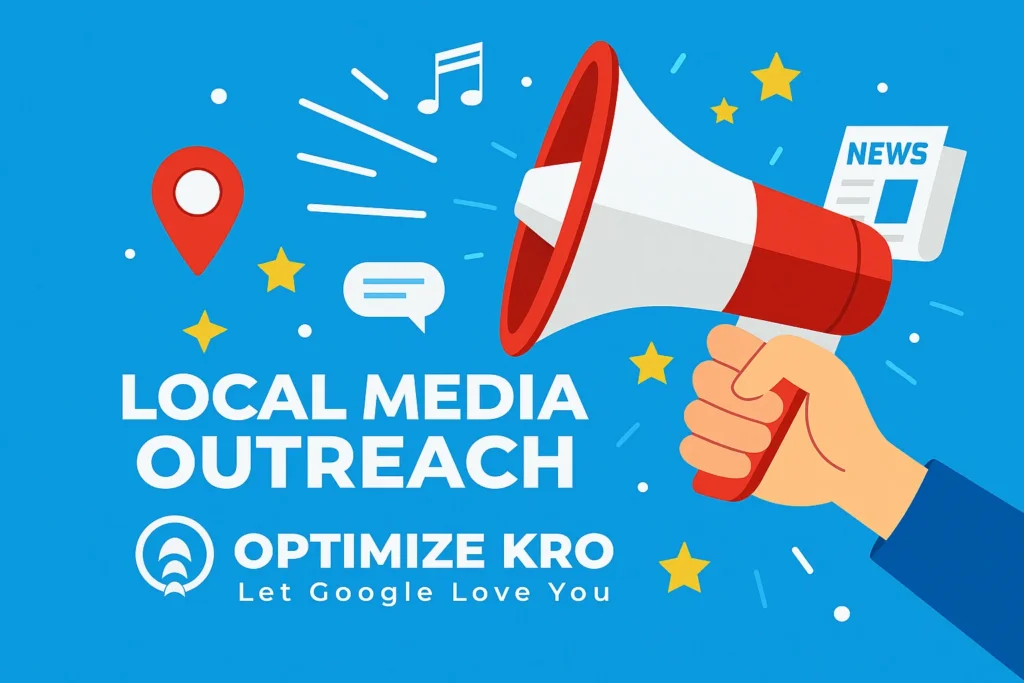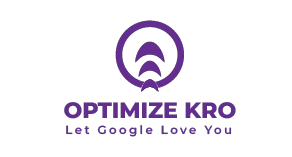Local media outreach is a key strategy for businesses, organizations, and individuals who want to increase their visibility, enhance credibility, and want to build trust by doing Off-Page SEO. By leveraging local media channels—ranging from newspapers and radio to online blogs and TV stations—you can spread your message to a targeted audience. This guide provides a detailed overview of how to effectively plan and execute a local media outreach campaign. It includes strategies, best practices, and common pitfalls to avoid, as well as a list of essential items, tables, and frequently asked questions (FAQs) to help you succeed.
Table of Contents
- What is Local Media Outreach?
- Why is Local Media Outreach Important?
- Identifying the Right Local Media Outlets
- Creating a Media List
- Developing Your Pitch
- Sending Your Pitch
- Follow-up Strategies
- Leveraging Local Social Media
- Building Long-Term Relationships with Local Media
- Monitoring and Evaluating Media Coverage
- Best Practices for Local Media Outreach
- Pitfalls to Avoid
- FAQs
1. What is Local Media Outreach?

Local media outreach involves building relationships with local news organizations, journalists, and other media influencers to secure coverage for your business, event, or cause. It is an essential tool for gaining exposure in the local community, driving traffic to your business, or promoting a local event.
2. Why is Local Media Outreach Important?
Local media outreach is vital because it allows businesses to:
- Enhance visibility within the community.
- Build credibility with a local audience.
- Engage with potential customers who are geographically close.
- Leverage trusted voices (journalists, editors, and local influencers) to spread your message.
- Boost SEO through backlinks when media outlets mention your business online.
3. Identifying the Right Local Media Outlets
Before reaching out, it is essential to identify which local media channels will be most beneficial for your outreach. Local media includes:
- Newspapers: Local print publications like community newspapers and weekly papers.
- Radio: Both AM/FM stations and local podcast hosts.
- Television: Local TV news stations or local broadcast channels.
- Online Publications: Blogs, news websites, and community-focused sites.
- Social Media Influencers: Local influencers with a significant online following.
4. Creating a Media List
A media list is a curated compilation of journalists, editors, and outlets that are most likely to cover your story. This list is vital for targeting the right individuals who may be interested in your pitch.
Essential Components of a Media List:
| Media Outlet | Contact Name | Position | Email Address | Phone Number | Coverage Area | Notes |
|---|---|---|---|---|---|---|
| Local TV News | John Smith | Reporter | [email protected] | 555-555-5555 | Local News | Focuses on human interest stories |
| Local Radio | Sarah Johnson | News Editor | [email protected] | 555-555-5556 | Local Events | Covers local events & interviews |
| Local Blog | Bob White | Editor | [email protected] | 555-555-5557 | Local Lifestyle | Features community-driven content |
5. Developing Your Pitch
A well-crafted media pitch is your key to securing coverage. It should be concise, relevant, and tailored to each journalist’s audience.
Key Elements of a Good Pitch:
- Headline: A compelling subject line to grab attention.
- Personalization: Address the recipient by name and reference their past work or interests.
- Introduction: A brief introduction about who you are and why you are reaching out.
- Story Angle: A clear and relevant angle that ties your story to their audience.
- Call to Action: A specific request, like an interview or article mention.
6. Sending Your Pitch
Once you’ve crafted your pitch, sending it is an art. Here’s a simple approach:
- Email: Send your pitch as an email, ideally with a press release attached.
- Follow-Up: Send a polite follow-up after a few days if you don’t receive a response.
- Social Media: Use social media to engage journalists informally and build rapport before pitching.
7. Follow-up Strategies
Journalists are busy, so don’t be discouraged if you don’t get a response immediately. Following up is essential to keep the conversation going. However, keep the following in mind:
- Timing: Wait about 3-4 days after the initial email before following up.
- Tone: Keep your follow-up brief, polite, and professional.
- Persistence: Don’t be pushy—one or two follow-ups should be sufficient.
8. Leveraging Local Social Media
Social media platforms such as Facebook, Instagram, and Twitter allow businesses to directly reach local audiences. Engage with local media outlets, influencers, and communities on these platforms to amplify your message. Hashtags related to your city or region can also help extend the reach of your posts.
What Our Clients Say
Trusted by contractors and local businesses for proven Local SEO Services.
John M. – General Contractor
“These guys transformed my Google Maps ranking. More calls, more local leads, and better visibility!”
Sarah L. – Roofing Business
“Within 3 months, my business went from page 3 to the top 3 listings. Highly recommend their Local SEO service!”
David K. – Plumbing Services
“Affordable and effective SEO. My local service calls doubled in less than 90 days.”
9. Building Long-Term Relationships with Local Media
Rather than focusing on one-time media placements, aim to build ongoing relationships with local journalists. To do this:
- Be consistent with outreach.
- Offer exclusive content and information.
- Respond promptly to any media requests.
- Attend local media events and engage with journalists in person.
10. Monitoring and Evaluating Media Coverage
After you’ve secured media coverage, it’s time to track and evaluate its impact. Use tools like Google Alerts and media monitoring services to keep an eye on any mentions of your business. Evaluate the effectiveness of your outreach by looking at:
- Engagement levels (shares, comments, likes).
- Traffic spikes to your website or social media.
- Audience reach (number of people who saw the coverage).
11. Best Practices for Local Media Outreach
- Know your audience: Tailor your pitch based on the media outlet’s audience.
- Provide value: Offer something newsworthy, relevant, or exclusive.
- Be clear and concise: Journalists appreciate brevity and clarity.
- Be prepared: Have supporting materials ready, such as press releases, images, or data points.
- Be timely: Reach out well in advance of any events or product launches.
12. Pitfalls to Avoid
- Being too salesy: Focus on the story, not just your product or service.
- Ignoring local relevance: Ensure your story is timely and pertinent to the local community.
- Lack of follow-up: Journalists may miss your email; always follow up professionally.
- Not being clear: Keep your pitch clear, concise, and to the point.
A: Personalize your pitch, ensure it’s relevant to the outlet’s audience, and offer unique insights or information that is not easily available elsewhere.
A: Generally, early mornings on weekdays (Tuesday to Thursday) are ideal. Avoid sending pitches on weekends or holidays.
A: Track media mentions, website traffic, social media engagement, and any direct customer feedback related to the media coverage.
A: Yes, but be respectful. Wait 3-4 days before sending a polite follow-up.
A: Research the media outlets that cover your industry or locality. Look at their audience and the types of stories they cover to find the best fit.
Conclusion
Effective local media outreach is an essential part of any marketing or public relations strategy. By understanding the local media landscape, creating compelling pitches, and fostering relationships with journalists, you can amplify your message and connect with the community in meaningful ways. Be consistent, persistent, and strategic in your approach, and your outreach efforts will pay off with increased visibility and community engagement.

Gulfam Qamar is a seasoned Local SEO expert with a proven track record of helping businesses boost their online visibility and dominate local search results. With deep expertise in Google Business Profiles, on-page optimization, and local citation strategies, Gulfam helps brands connect with nearby customers and grow sustainably. When he’s not optimizing websites, he’s sharing actionable SEO tips and insights to empower small businesses in the digital space.

